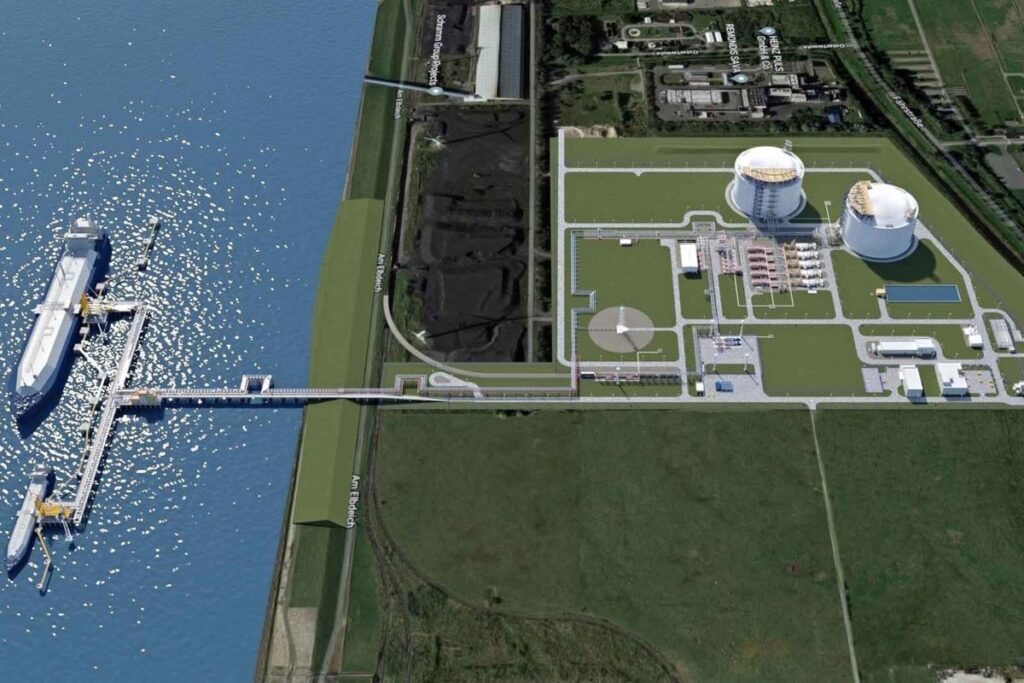Accelerating green ammonia import plans for Germany
By Julian Atchison on March 20, 2022
RWE, Brunsbüttel

RWE is accelerating plans for a green ammonia import terminal in Brunsbüttel, with facilities to be ready to receive 300,000 tonnes per year as early as 2026. The immediate focus for Brunsbüttel is gas: earlier this month RWE was one of three partners that entered into an MoU for quick construction of an LNG import terminal on the same site, a move designed to lessen Germany’s dependence on gas imports via pipeline. But RWE indicates that the ultimate goal is complete conversion of the site to only import “green molecules” like ammonia, with the Brunsbüttel project to act as a “role model” for decarbonisation projects elsewhere.
From as early as 2026, around 300,000 tonnes of green ammonia per year are due to arrive in Germany via the terminal and be distributed to customers. The next step is to build a cracker on a large industrial scale at the terminal to produce green hydrogen on site as well. This will then be transported to industrial customers via a dedicated hydrogen pipeline.
With this expansion stage, an increase in the volume of ammonia to two million tonnes per year is also planned. The terminal is thus at the beginning of a green import infrastructure that will lead to climate-friendly production processes. Due to its direct access to the North Sea and the Baltic Sea, and its connection to European inland waterways, the Brunsbüttel site offers ideal logistical conditions for the project. Brunsbüttel Ports GmbH is supporting the project with space and as a logistics partner with port infrastructure to unload tankers.Details of the green ammonia import plan, from RWE’s official press release, 18 Mar 2022
RWE expects investments in the mid three-digit million euro range.
Shipping sunshine between Australia and Germany
In April last year RWE and Australia-based organisation the Hydrogen Utility (H2U) signed an MoU to develop hydrogen trading (as ammonia) between Australia and Germany, with Brunsbüttel identified as an “ideal location” for imports. H2U’s Eyre Peninsula Gateway project in South Australia is the most likely candidate for green ammonia supply.
That MoU is strongly aligned with an ongoing feasibility study – HySupply – being carried out by a diverse consortium of Australian and German partners (steered by the University of NSW in Sydney), with final results due at the end of this year. Interim results (pdf download) from the study were released late last year, and the study’s authors are confident that transport costs for shipping ammonia 20,000km between Australia and the Port of Rotterdam will be much lower and more manageable than first thought. More information on HySupply can be found on their website.